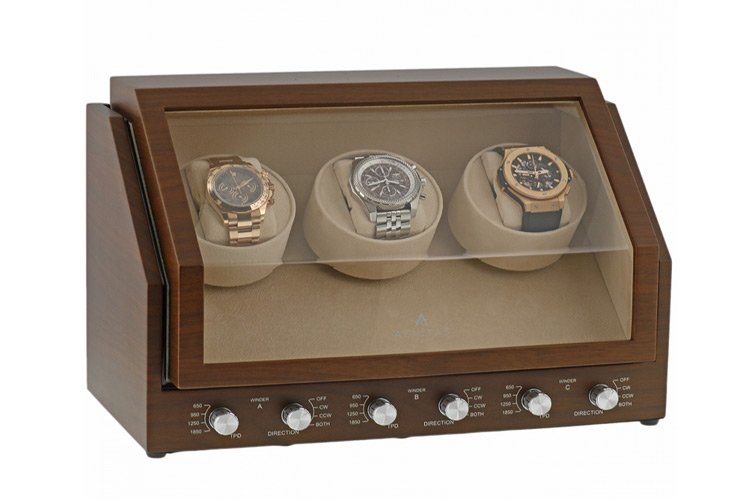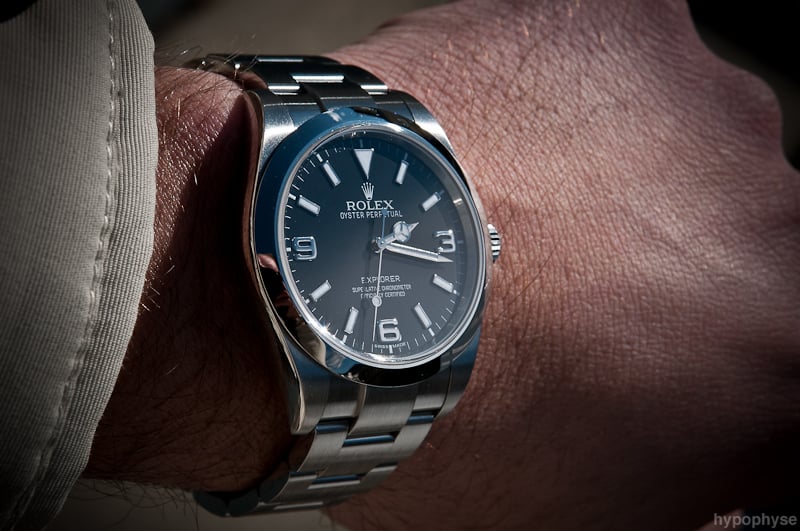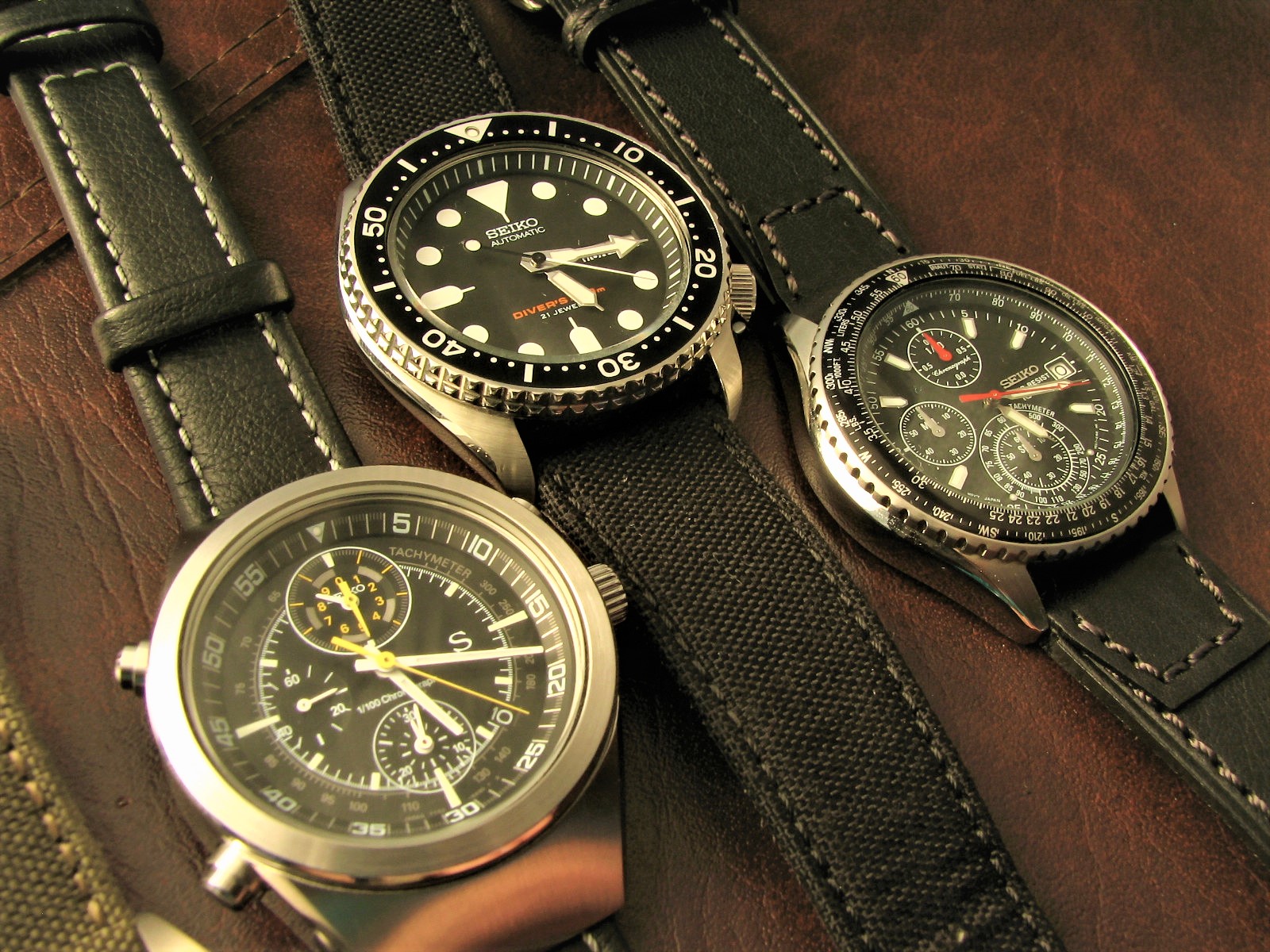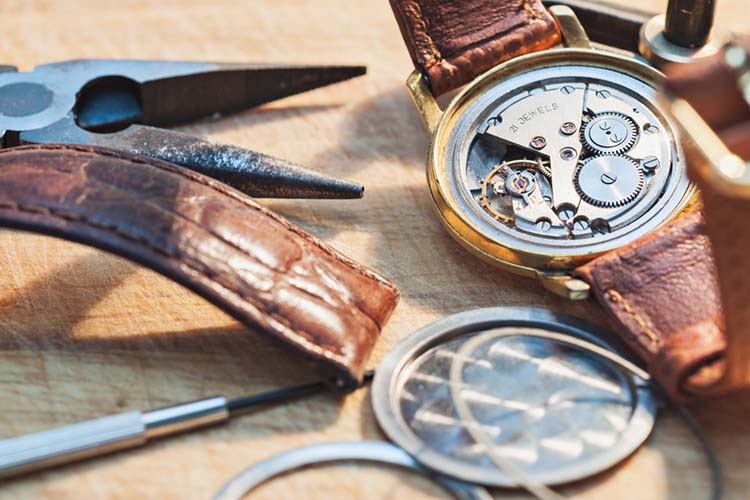Many watch owners have never had to wind a watch in their life. The “quartz revolution” of the 1970s changed the entire industry and threatened to make the wound mechanical watch a relic of the past. In the 1980s, digital watches rose in popularity, making old-fashioned timepieces seem out of touch. While a quartz watch runs on a battery, an automatic watch uses the movement of your wrist to power the mechanism.
A watch winder is a box or container with holders for more automatic watches. When you aren’t wearing your watch, you place it in the box, and the watch winder does its magic. The motion of the winder mimics the motion of a human wrist so that the watch is constantly storing energy.
It’s a basic rule of fashion, though, that what once was old will become new again, and the mechanical watch is currently riding a wave of popularity. It makes sense, as mechanical watches are well-crafted, stylish, and reliable.
In our current age of technology, the only problem is that even the most retro-loving watch aficionado doesn’t want a timepiece that winds down and stops telling time.
Thankfully, there is a way to enjoy the timeless style of a classic mechanical watch without the need for constant winding.
Triple Watch Winder Winding 3 Watches at the same time.
Table of Contents
Mechanical Watches Need To Be Wound
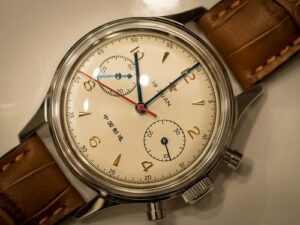
To explain why a mechanical watch is wound, I need to give a quick explanation of how a mechanical watch works.
The internal components of a mechanical watch are mostly a series of gears that spin toward different purposes.
The escapement and oscillator work together as the timekeeper, while the dial train moves the dials on the face of the watch, and the gear train is the energy transporter.
The important watch part for our topic today is the mainspring. This is the piece of the watch that stores and then releases all the energy necessary for the whole shebang to keep on spinning. A mainspring is generally a coiled piece of metal that connects the winding mechanism to the gear and/or dial trains. Without it, your watch is just a collection of well-crafted, unmoving wheels.
The mainspring stores energy when it is wound tight and then gradually releases it as it unwinds. A good mechanical watch can go days without being wound, though most need to be wound every night. The exception to that rule is the automatic winding watch.
Automatic winding watches
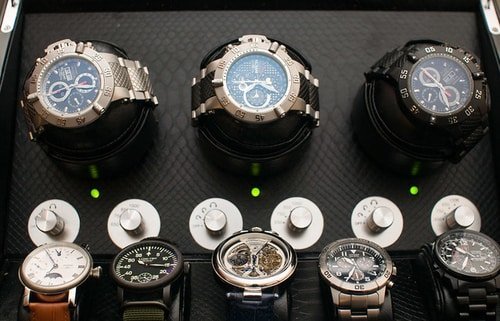
In the 18th century, mechanical watches were a sensation, but there was just one problem: having to wind your watch every night was tedious.
Watchmakers started working on the automatic watch, and in the 1770s, the first ones appeared.
A normal mechanical watch has a winding stem with a knob on the outside of the watch’s body that allows the wearer to wind the mainspring manually.
The automatic watch replaces the winding stem with internal, oscillating weights that transfer the wearer’s movements into the watch by winding the mainspring. As long as the wearer is active, the watch remains wound.
To this day, the automatic watch remains one of the great milestones in watchmaking history.
Finding a way to harness human movement for stored energy is a conservationist’s dream. Unfortunately, humans are not perpetual motion machines: we aren’t always moving and eight hours of the day (for some of us), we are motionless in our beds.
For a closer look at how watch winders work, you may want to check out this video:
Watch Winders:
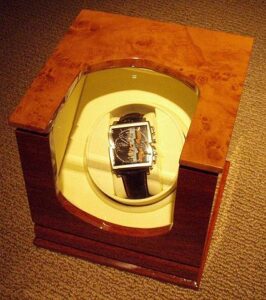
When an automatic watch is at rest, it winds down the same as a traditional mechanical watch. Most can be manually wound after a night’s rest, but that kind of defeats the whole purpose of an automatic watch. If only a device would keep your automatic watch wound even when it wasn’t on your wrist. See our overview for a better understanding of different kinds of watches besides automatic and mechanical.
The watch winder is just that device. A watch winder is a box or container with holders for more automatic watches. When you aren’t wearing your watch, you place it in the box, and the watch winder does its magic. The motion of the winder mimics the motion of a human wrist so that the watch is constantly storing energy. Winders usually have various settings for the direction and frequency of winding.
While traditional mechanical watches have a finite winding capacity, automatic watches are designed with special mainsprings that can’t be overwound. This is important because it means that you can place your automatic watch in a watch winder and leave it there for days, weeks, or even months, and it won’t harm the mechanisms.
Do I Need A Watch Winder?
A watch winder is a cool tool for watch owners, not only because they keep your watch wound but because they provide a safe place to store your watches when you’re not wearing them. Most of them double as display boxes so you can show off your collection. If you don’t have an automatic or hybrid mechanical watch, though, there’s no need for one.
Let’s be honest: in the strictest sense, a watch winder isn’t technically necessary. But when has that ever stopped a watch collector from investing in a beautiful piece of technology?

